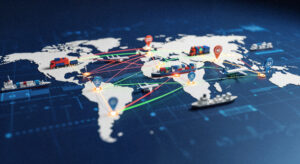Integrating Technology in ISO 9001 & ISO 22000 Audits for Enhanced Efficiency
Introduction
Incorporating technology in ISO 9001 and ISO 22000 audits enables auditors to perform assessments with greater efficiency, accuracy, and speed. Tools such as data analytics, audit management software, and mobile applications streamline the audit process, making it more effective. This article explores the ways in which technology enhances ISO 9001 and ISO 22000 audits, supporting quality and food safety objectives.
Table of Contents
1. The Importance of Technology in Modern Audits
Technology has transformed auditing by increasing precision, improving data accessibility, and enabling remote assessments. Key advantages include:
- Enhanced Data Accuracy: Technology helps collect and analyze data more accurately, reducing errors in audit results.
- Improved Efficiency: Automated processes and digital tools streamline audits, saving time and resources.
- Real-Time Monitoring: Auditors can monitor quality and safety metrics in real-time, ensuring timely intervention if issues arise.
Technology is a key asset in efficient audits. For insights, explore QMII’s ISO 9001 and ISO 22000 Lead Auditor training.
2. Types of Technology Used in ISO 9001 & ISO 22000 Audits
Various technologies are utilized in audits to enhance quality and safety assessments. Common technologies include:
- Audit Management Software: These tools organize and manage audit data, facilitating report generation and tracking findings.
- Data Analytics Tools: Analytics software helps auditors identify patterns and trends, enabling data-driven insights into quality and safety.
- Mobile Applications: Mobile audit apps allow auditors to perform audits on-site, capturing data and images instantly.
Technological tools make audits more thorough and efficient. For training, see QMII’s ISO 9001 and ISO 22000 courses.
3. Benefits of Technology Integration in Auditing
Integrating technology into ISO 9001 and ISO 22000 audits enhances the process and improves audit quality. Key benefits include:
- Faster Audit Turnaround: Digital tools streamline the audit process, making it quicker to complete assessments and generate reports.
- Higher Accuracy: Technology minimizes human error in data entry and analysis, increasing the accuracy of audit findings.
- Improved Traceability: Audit software tracks each step, providing a clear record of findings and corrective actions.
Efficiency and accuracy are critical for reliable audits. Learn more in QMII’s ISO 9001 and ISO 22000 training.
4. Best Practices for Technology Integration in Audits
To maximize the benefits of technology in auditing, organizations and auditors should follow these best practices:
- Choose the Right Tools: Select tools that align with audit requirements, focusing on usability, security, and scalability.
- Ensure Data Security: Protect sensitive audit data with robust security protocols and compliance with data protection regulations.
- Train Auditors on Technology Use: Provide training to auditors on effectively using audit software and analytics tools, enhancing their skills.
These best practices ensure successful technology adoption. For training on digital auditing, see QMII’s ISO 9001 and ISO 22000 Lead Auditor courses.
Frequently Asked Questions
How does technology enhance ISO 9001 and ISO 22000 audits?
Technology increases audit accuracy, streamlines the audit process, and provides real-time monitoring, making audits faster and more efficient.
What types of technology are used in audits?
Common technologies include audit management software, data analytics tools, and mobile applications that support on-site data collection and reporting.
What are the best practices for integrating technology in auditing?
Best practices include selecting the right tools, ensuring data security, and providing training to auditors on effective technology use.

